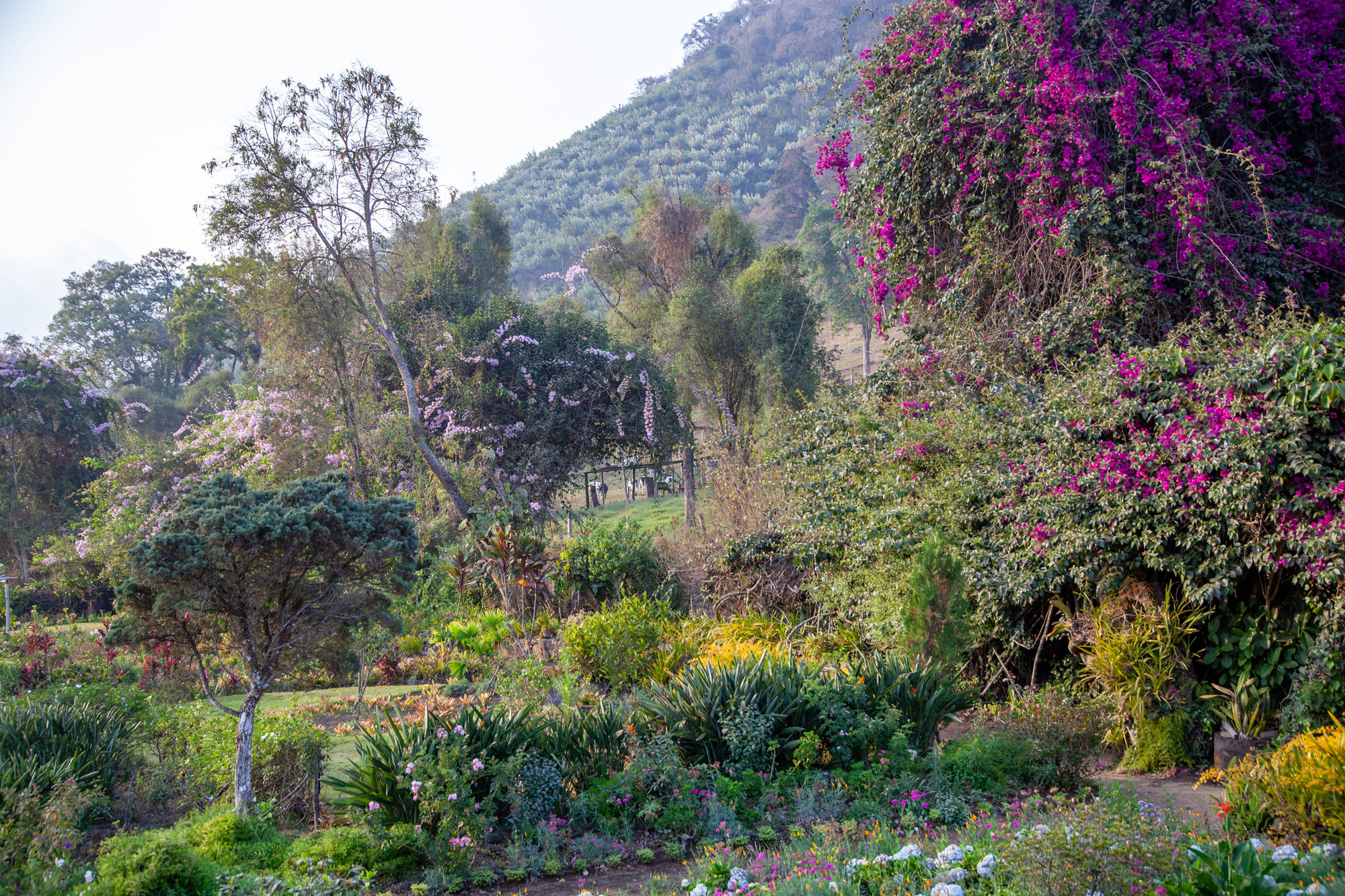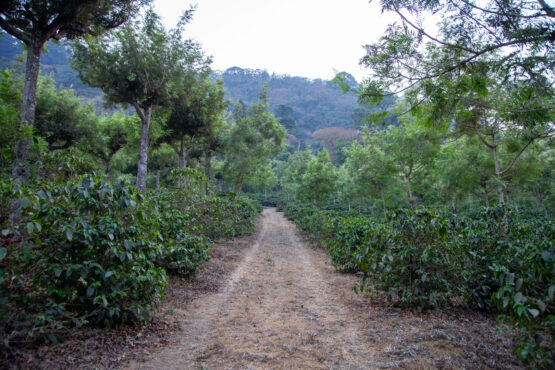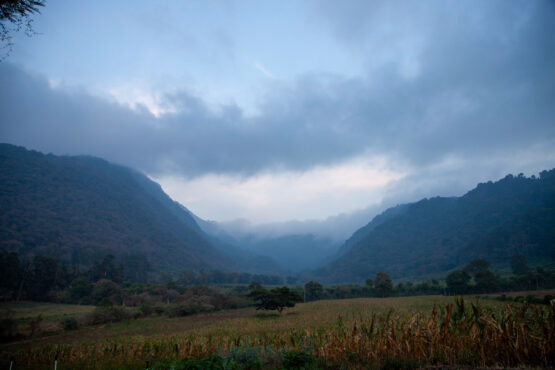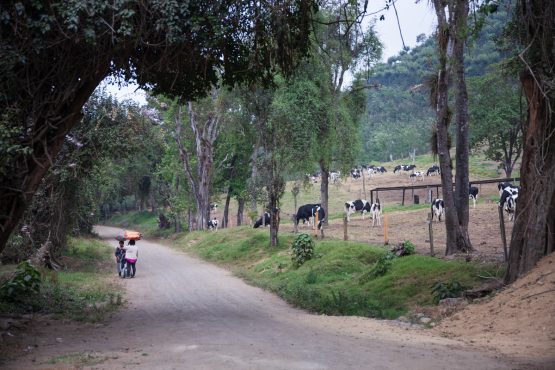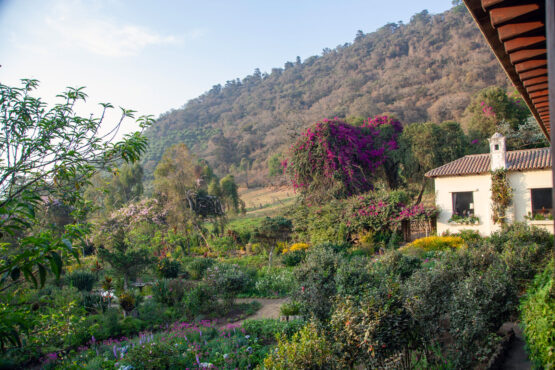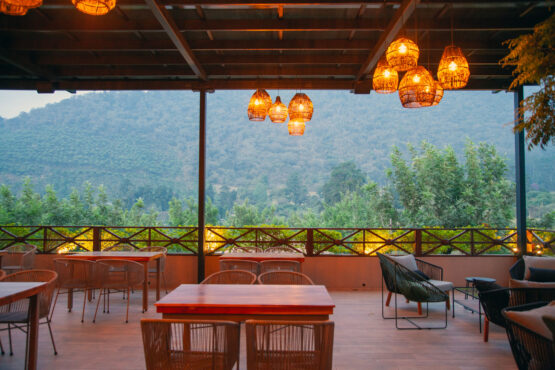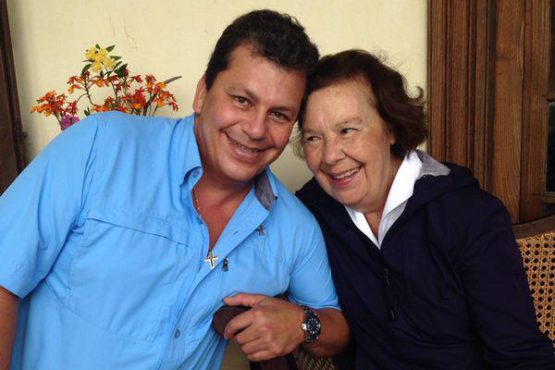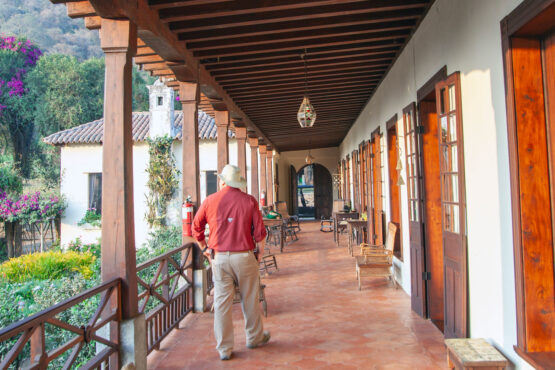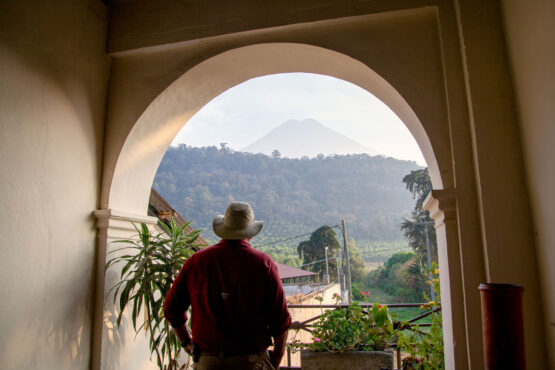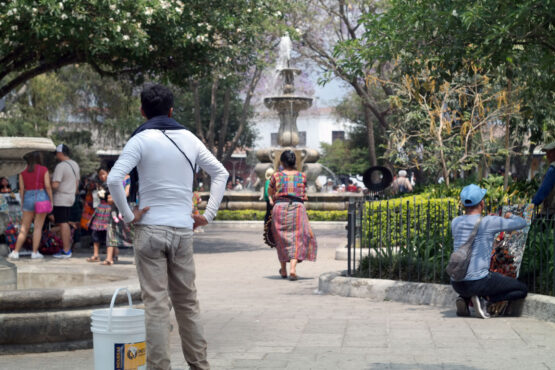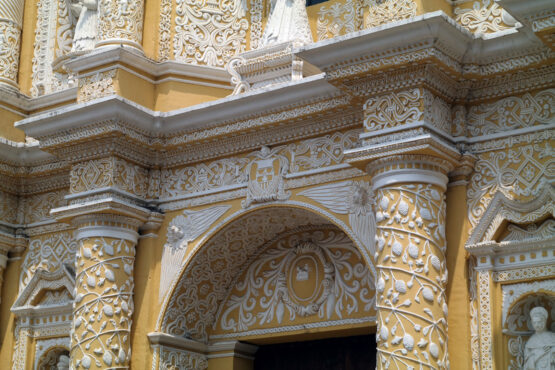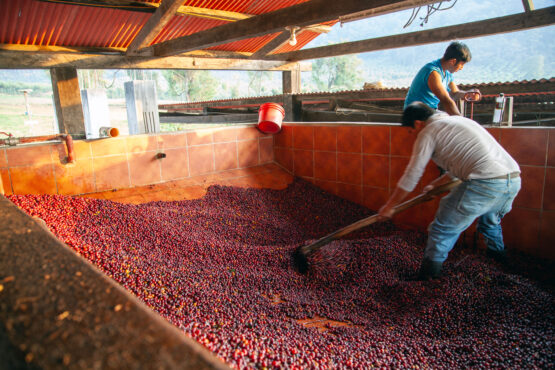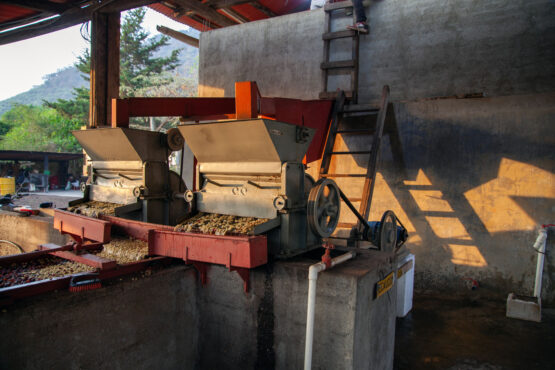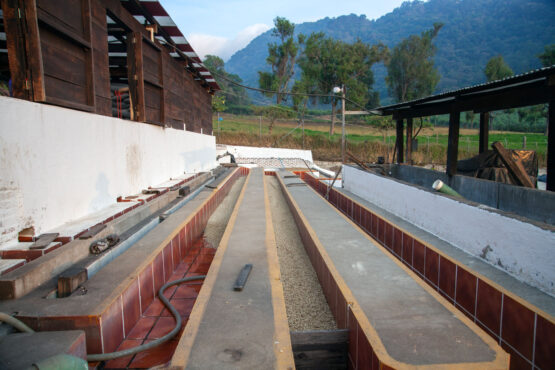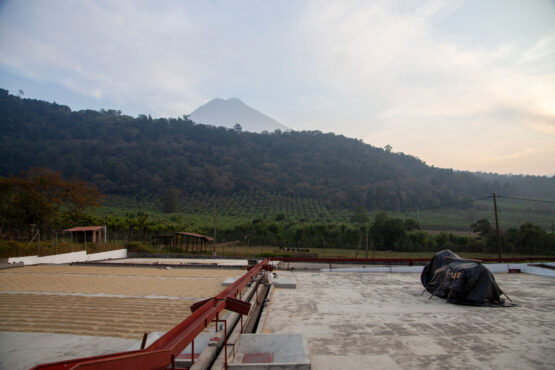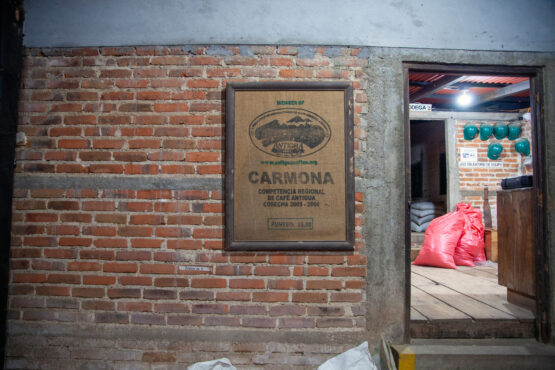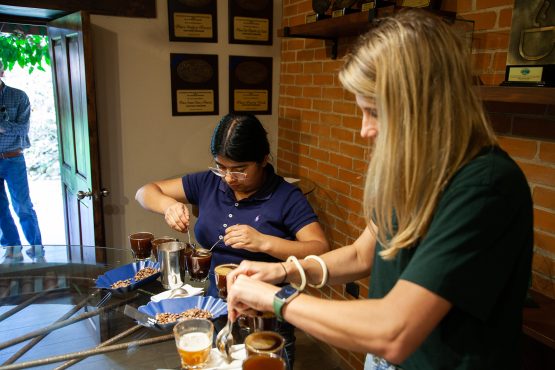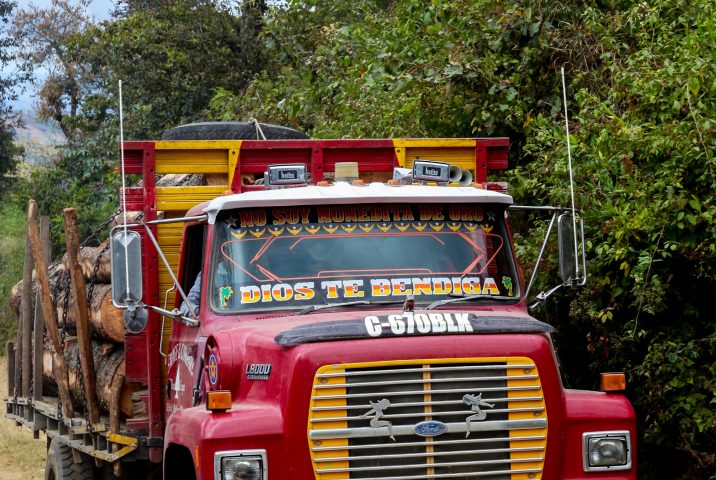Hacienda Carmona
Refined lemon-lime acidity and honey sweetness. Apricot and butterscotch with lingering florals.
Hacienda Carmona is an incredibly beautiful estate located on the fertile slopes of the Hunahpú Volcáno (also called Agua in Spanish), in the heart of the Antigua Valley. Coffee was first planted here in the 1800s, and many of the original Typica and Bourbon varieties originally planted remain today and contribute to the elegant and distinct flavour profile this special farm produces.
At 700 Hectares in size, Hacienda Carmona is quite a large estate. Some 150 hectares are dedicated to coffee, and around 500 to natural reserve. In addition to its stunning homestead (with gardens inspired by a trip the family took to France in the 1800s), the estate raises Holstein cattle, and now includes a restaurant and mountain biking track.
Hacienda Carmona is owned by the Zelaya family, who have been growing coffee for over 100 years. Walking around Carmona is like taking a trip through the Zelaya family’s history: this was the first estate purchased by patriarch Luis Pedro Aguirre in 1910, and is now managed by fourth-generation producer Ricardo Zelaya (of Santa Clara Estate).
Before Ricardo took over operations, Carmona was owned by his aunt, Maria Zelaya Aguirre who inherited the farm in 1959. For decades, Maria grew coffee following more conventional techniques, spending most of her time walking through the farm, keeping a close eye on the cattle she raised and on the health of the plantation. In 2012, after a bout of leaf rust decimated the farm, Maria decided to completely overhaul the agricultural practices and focus on producing higher quality, specialty grade coffee.
With the help of her nephews Luis Pedro and Ricardo Zelaya, Maria began to upgrade Carmona, renewing and establishing new plots, and making changes to the agricultural practices in place. By focusing on improving plant nutrition, irrigation and pruning techniques Maria was able to get better quality and productivity from her crop. More organic farming practices were also introduced, like the use of cow manure from the estate’s Holstein dairy cows to fertilise the trees. Over a decade on, these efforts have resulted in greater yields, healthier trees and an across-the-board improvement in the quality of the coffee produced! Having spent more than five decades at the helm of Carmona’s operations, Maria eventually decided to retire, choosing to hand the reigns over to Ricardo and Luis Pedro. Sadly, Maria passed away in early 2024, yet her passion for producing beautiful Antiguan coffees and celebrating the family’s heritage lives on through the work of her two nephews at the farm.
The Zelaya family’s big heart is as evident in Hacienda Carmona as it is in Santa Clara Estate. Upon entering the property, one is welcomed by a small school for the youth of the communities that live near the farm. The recently renovated classrooms serve as a primary during the week, and in the evenings and weekends as a technical coffee-focused school. With the help of coffee organisation Anacafe, the school has produced four graduating classes, with many of those students going on to study agriculture at university. Along with the Zelayas, the school is funded by Canadian organisation Health for Humanity and by special fundraising programs run by coffee buyers, like our own Santa Clara Scholarship Fund. Head here to learn more about the Zelaya family’s work in Antigua.
ABOUT ANTIGUA GUATEMALA
The Antigua valley is bounded by three volcanoes – Hunahpú (also called Agua in Spanish), Chi Q’aq’ (also called Fuego) and Acatenango. Of the three, Chi Q’aq’ is the only one still active. On many visits, we have been in town at times the volcano has erupted, adding some chaos to the harvest (in the short term, the ash can stick to the leaves of coffee trees nearby and prevent the trees from photosynthesising), but ultimately providing mineral-rich ash for Antigua’s soil. This volcanic matter helps the soil retain its moisture, offsetting the region’s lower rainfall.
Coffee from Antigua is perhaps Guatemala’s best-known and most celebrated and, as such, typically attracts higher prices than coffee from other regions. They tend to be heavier bodied, with notes of dark chocolate, brown sugar and red apple. In 2000, Antigua received a Denomination of Origin to recognise the region as distinct, and to prevent other coffees from being marketed as Antiguan.
The region surrounding Antigua Guatemala is the traditional land of the Kaqchikel people, who were once one of Guatemala’s largest Mayan kingdoms. Their ancient capital, Iximché, is located some 50km from the Antigua valley, and was considered one of the country’s most important cities before the Spanish invasion of Guatemala. The Kaqchikel are remarkable historians, and their oral and written traditions (compiled in The Annals of the Kaqchikel) have been an important resource in preserving the cultural heritage of many of Guatemala’s indigenous communities.
HOW THIS COFFEE WAS PROCESSED
Every cherry at Hacienda Carmona is selectively hand-picked and delivered to the wet mill located on-site. According to Ricardo, although they are very demanding about picking practices, the majority of the seasonal workers come back year after year, which is a testament to the fair conditions and pay they receive.
At the mill, the fruit is pulped and fermented overnight in tiled tanks. The beans are then washed to remove any remaining pulp and carefully dried on the patio. Once dry, the coffee is rested in parchment until it is ready for export. It is then milled at Hacienda Carmona’s small dry mill which is located on the farm. The management of this meticulously run mill is overseen by a talented team who carefully monitor every stage of milling to ensure high-quality expectations are met. Throughout the process, Ricardo also ensures that all organic by-products are recycled and reused.
Ricardo recently built a dedicated lab at Santa Clara Estate and has a QC team focused on analysing every single lot produced at the farms he manages. Flor Ventura heads up the QC program and is in charge of all of the roasting and cupping. Each day lot is cupped and scored prior to blending and the findings are used to inform improvements in harvesting and processing.
WHY WE LOVE IT
We have been fortunate enough to have been buying and representing coffee from the Zelayas since 2008, and we feel so incredibly lucky to work with such a remarkable family and coffee.
One of our favourite moments when visiting the farm was seeing an amazing video that the staff had produced as a surprise for Ricardo and his family to show their gratitude. It was presented at their Christmas party (an annual event to which all of Santa Clara’s workers and families are invited to dance and eat lots of yummy food). You can watch here (we can’t encourage you to watch this enough—it will make you smile!).
